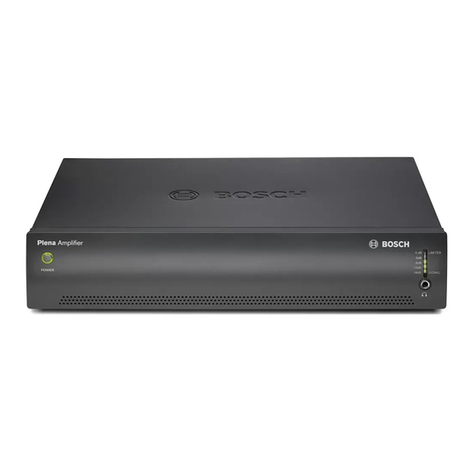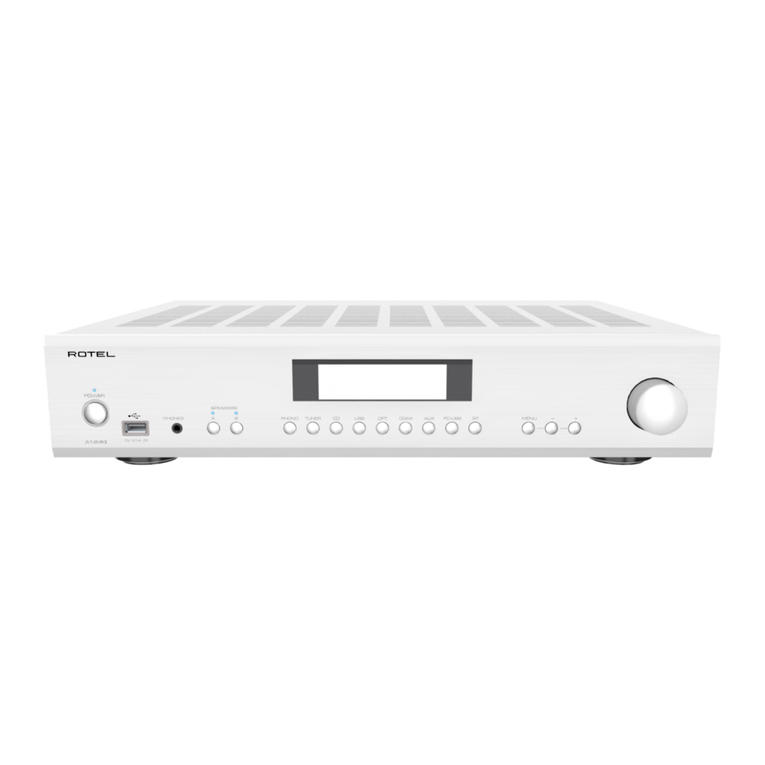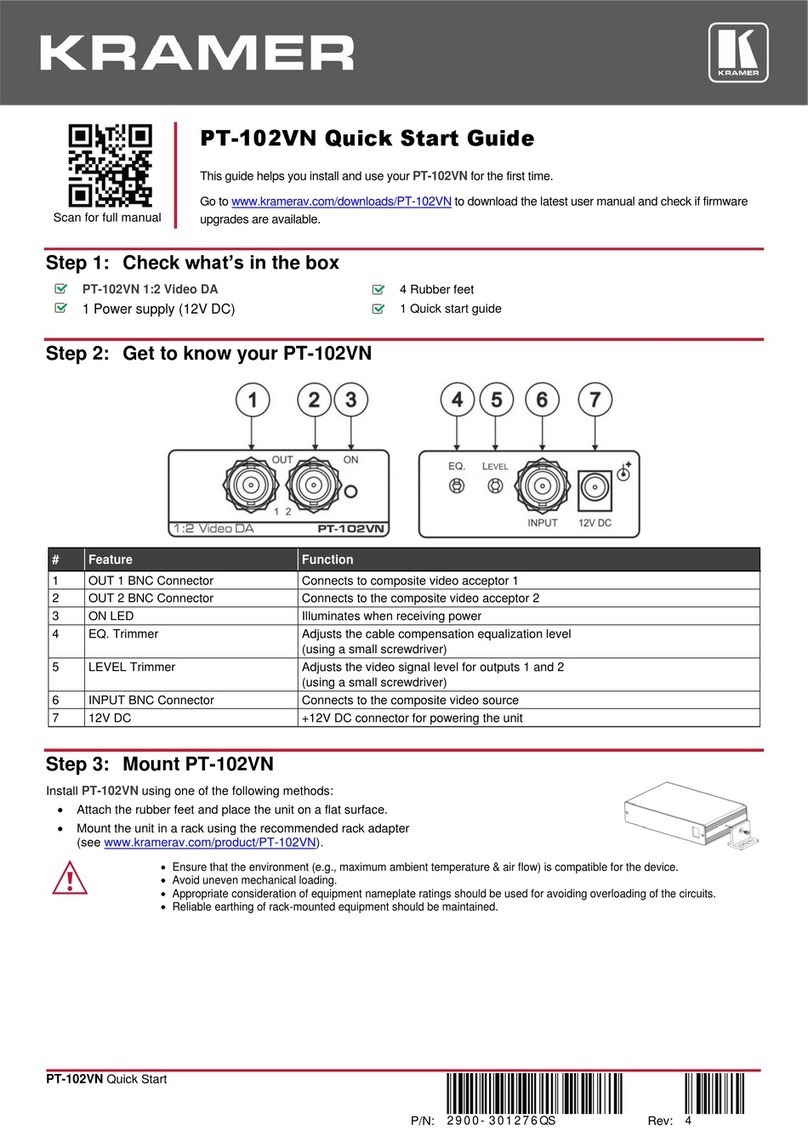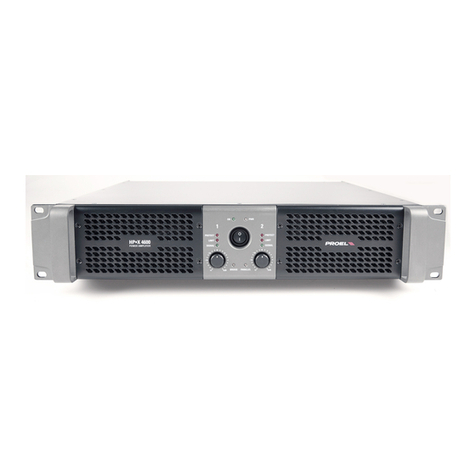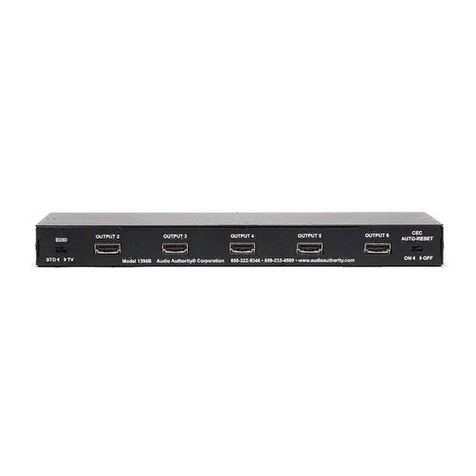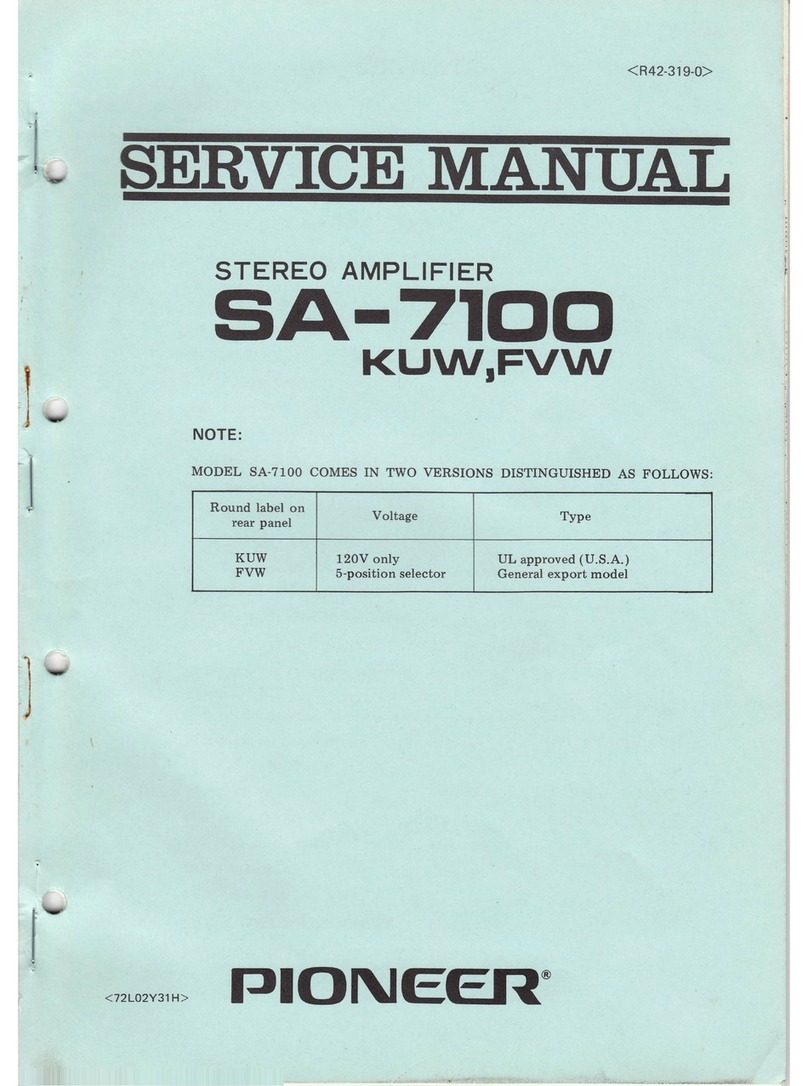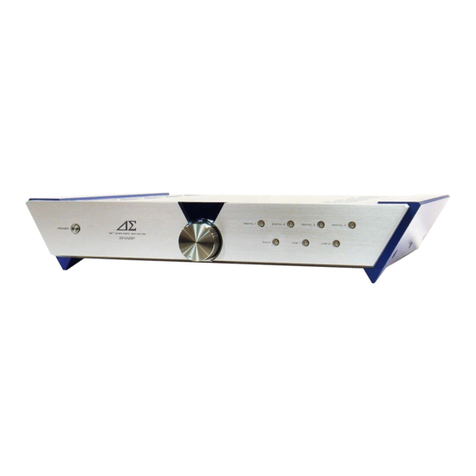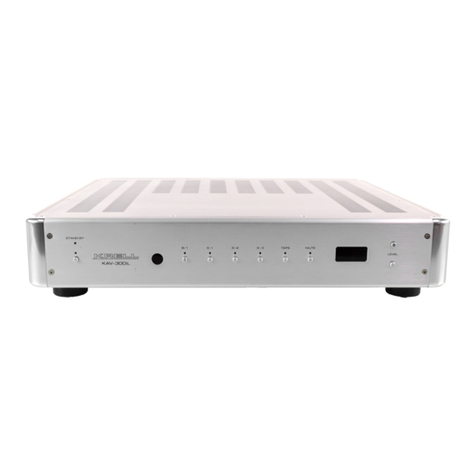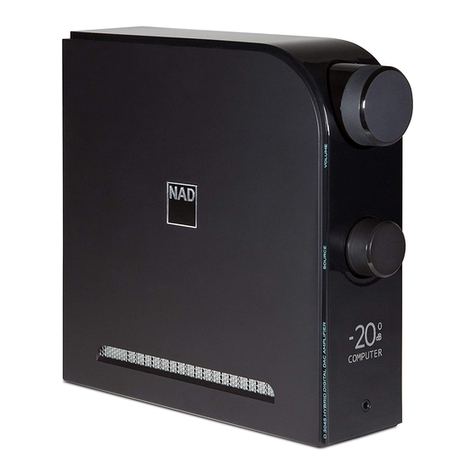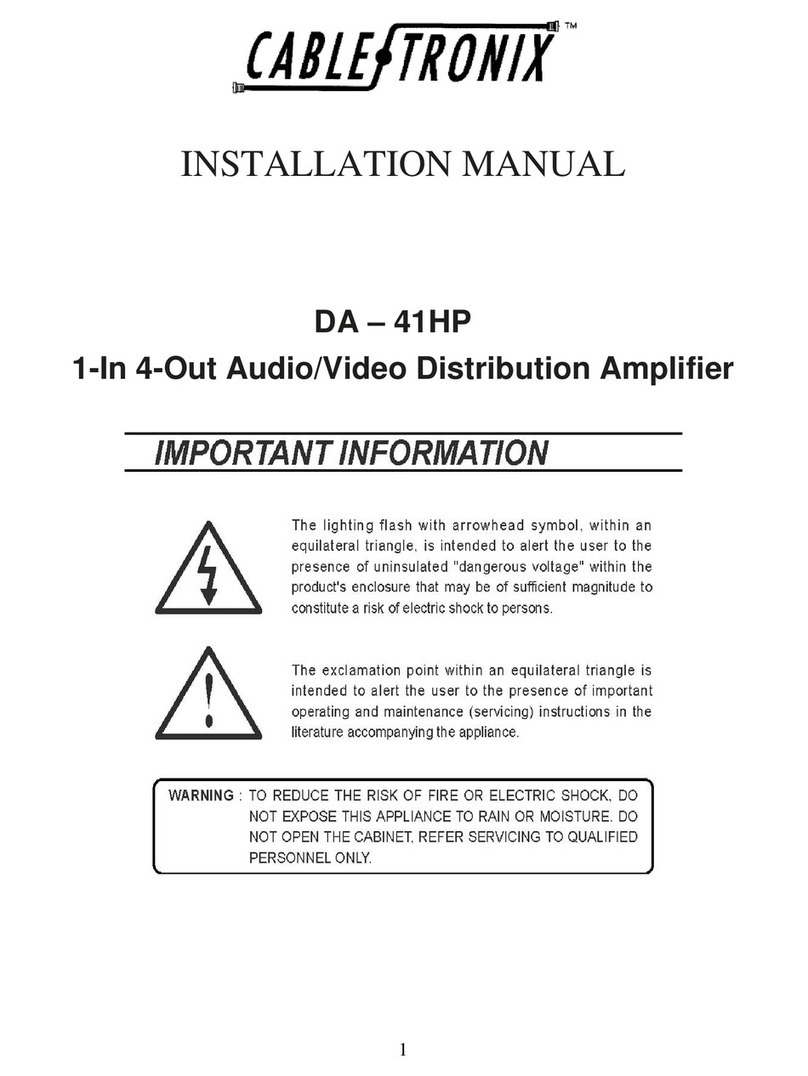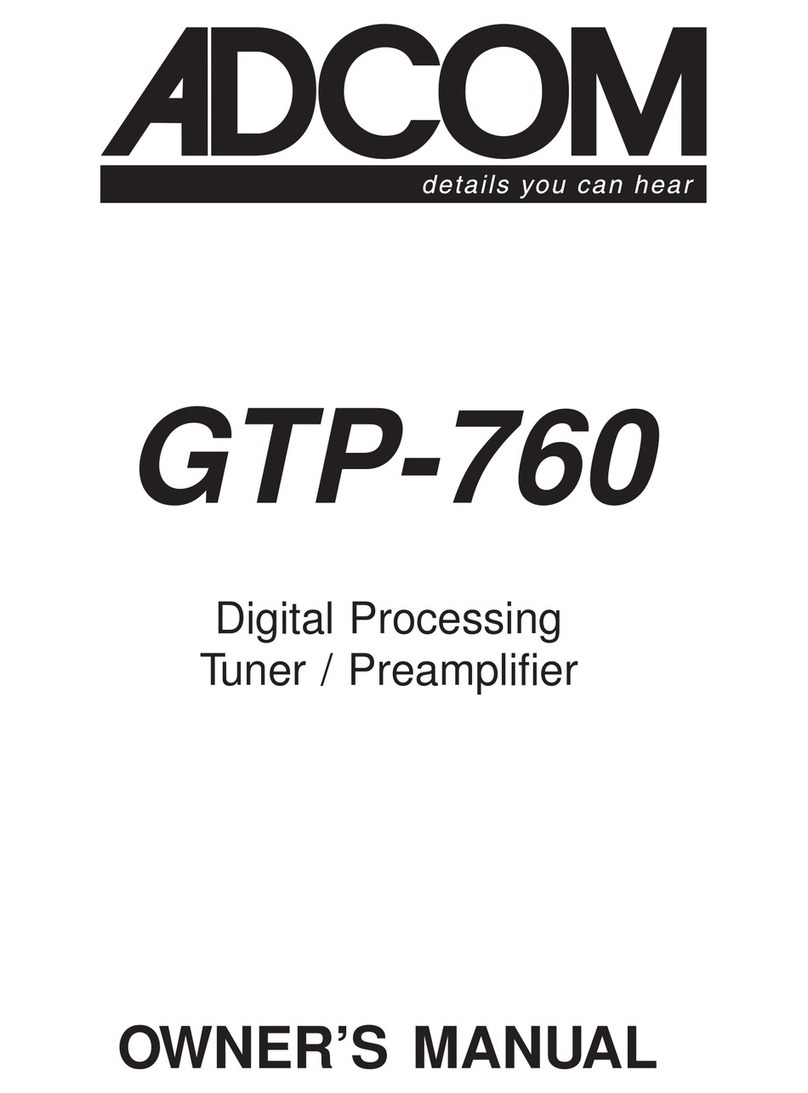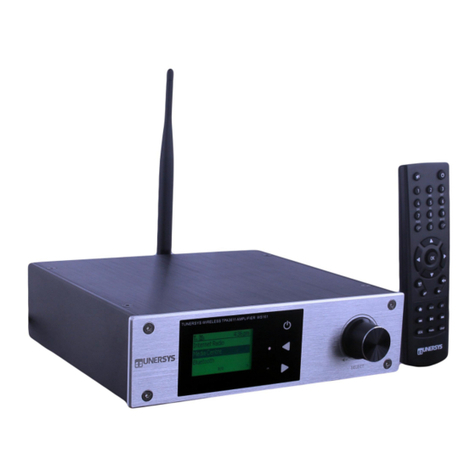SELS FL 70 R User manual

+U
B
B
B
B
B
B
B
B
FL 70 R
-
Dla światłowodów o średnicy ø2,2 mm
-
Montaż na szynie DIN (DIN-46277-3)
-
Przycisk uczeniaTeach-in
-
Zewnętrzne programowanie i blokada
przyciskiem uczącym
-
Wybór funkcji N.O. - N.C.
-
Światło czerwone 660 nm
Czujnik do światłowodów
Fibre optic amplifier
Détecteur à fibre optique
-
For fibre optics ø2,2 mm
-
DIN rail mounting (DIN-46277-3)
-
Teach-in
-
External teach for setting and to disable
the teach button
-
N.O. - N.C. selectable
-
Red light 660 nm
Odbiornik / Receiver / Récepteur
Nadajnik / Transmitter /
Emetteur
zielona LED / green LED / LED verte
żółta LED / yellow LED / LED jaune
Przycisk Teach-in / Teach-in
Button / Teach-in Touche
-
Pour fibre opt. ø2,2 mm
-
Montage sur rail DIN(DIN-46277-3)
-
Teach-in
-
Ligne pilote pour réglage ou
verrouillage
-
N.O. - N.C. réglable
-
Lumière rouge 660 nm
B
B
-U -U
Parametry optyczne (typ.)
Strefa działania: w zalezności od światłow.
Maksym. strefa działania: w zalezności od światłow.r
Regulacja strefy działania: PrzyciskTeach-in
Mat. odniesienia: Kodak biały, 90%, 200x200 mm
Rodzaj światła: czerwone 660 nm, pulsacyjne
Histereza strefy (90%): < 10% strefy działania
Optical data (typ.)
Scanning distance: depends on the fibre
Scanning range: depends on the fibre
Sensitivity adjustment: Teach-in
Reference material: Kodak white, 90%, 200x200 mm
Used light: red 660 nm, pulsed
Distance hysteresis (90%): < 10% of adjusted
scanning range
Caract. optique (typ.)
Distance de détection: dépend de la fibre optique
Rayon d'action: dépend de la fibre optique
Réglage de la distance de travail:
Teach-in
Matériau de référence: Kodak blanc,
90%, 200x200mm
Type delumière: rouge 660 nm, pulsée
Hystérésis de distance (90%): < 10% de distance de
détection réglable
Parametryelektryczne (typ.) Electrical data (typ.) Caract. électriques (typ.)
Napięcie zasilania +U : 10 ... 30 V DC Operating voltage +U : 10 ... 30 V DC Tensiond'utilisation +U : 10 ... 30 V DC
B B B
Zabezp. przed odwr. polaryz: tak Reverse battery protection U : yes Protection contre les inversions de polarité U : oui
Zewnetrzne uczenie
pin (ET): +U = funkcjaTeach-in
-U = blokada funkcji Teach-in
otwarte = praca czujnika
External teach (ET): +U = Teach-infunction
-U = Teach-in button locked
open = Normal operation
Apprentissage externe (ET): +U =Fonction
apprentissageteach-in
-U = Bouton apprentissage teach-in verrouillé
Pobór prądu bez obciążenia: ≤ 20 mA przy 24 V DC
Sygnał wyjściowy: patrz odpow. schemat
Prąd na wyjściu: 100 mA
Power consumption (no load): ≤ 20 mA at 24 V DC
Signal output: see selection table
Output current Ie: 100 mA
Consommation en courant
(sans charge):
ouvert = Activité
≤ 20 mA à 24 V DC
Przeciążalność krótkotrwała: tak
Częstotliwość pracy (ti/tp 1:1): 1500 Hz
Klasabezpieczeństwa:
Sygnalizacja wyjścia: LED żółta
Sygnalizacja zasilania: LED zielona
Short-circuit protection: yes
Switching frequency (at ppp 1:1): 1500 Hz
Protection class:
Output signal indicator: LED yellow
Stability indicator: LED green
Sorties de commutation: voir le tableau de choix
Courant de sortie Ie: 100 mA
Protection contre courts-circuits: oui
Fréquence de commutation (ti/tp 1:1): 1500 Hz
Protection électrique:
Visualisation de la sortie de commutation: LED jaune
Indicateur de stabilité:
Caract. mécaniques (typ.)
LED verte
Parametry mechaniczne (typ.)
Mechanical data (typ.)
Materiał obudowy:
PET
Casing material:
PET Matériau de boîtier:
PET
Klasa ochrony:
IP65
Protection standard:
IP65 Degré de protection:
IP65
Temperatura pracy:
-20 ... +60 °C
Ambient temperature range:
-20 ... +60 °C Température de fonctionnement:
-20 ... +60 °C
Temperatura przechowywania:
-20 ... +80 °C
Storage temperature range:
-20 ... +80 °C Plage de température de stockage:
-20 ... +80 °C
Kabel:
4 x 0,14 mm2
Cable:
4 x 0.14 mm2 Câble de raccordement:
4 x 0,14 mm2
Długość kabla:
2 m
Standard cable length:
2 m Longueur de câble standard:
2 m
Konektor:
M 8x1
Connection:
M 8x1 Connecteur de raccordement:
M 8x1
Masa (wersja konektor):
ok. 20 g
Weight (plug):
approx. 20 g Poids (Connecteur):
env. 20 g
Masa (wersja kabel):
ok. 50 g
Weight (cable):
approx. 50 g Poids (Câble):
env. 50 g
Wyjście
Output
Sortie
PNP N.O.
NPN N.O.
PNP N.O. NPN N.O.
Wyprowadzenie
Connection
Raccordement
Konektor
Connector
Connecteur
Konektor
Connector
Connecteur
Kabel Kabel
Cable Cable
Câble Câble
Schemat połączeń
Wiring diagram
1
1
2 2
Schéma de raccordement
Typ / Oznaczenie czujnika
Type / order ref.
Référence de commande
FL 70 R-PS-M4
FL 70 R-NS-M4
FL 70 R-PS-K4 FL 70R-NS-K4
SELS S.J. ul. Malawskiego 5a, 02-641Warszawa, tel.: (022) 848 08 42, 848 52 81, fax: 848 16 48
+U
Rysunek mechaniczny / Dimensional drawing / Plan coté
Anschluss / Wiring / Raccordement
153-00373
153-00372
1
2
154-00148
154-00148
1
BN
BN
NPN
NPN
2
WH
ET
WH
ET
4
BK
BK
PNP
PNP
3
BU
BU
B
B

:
:
FL 70 R
Montaż i regulacja Assamblyand adjustment Montage etréglage
Naciskaj przyciski tylko palcami!
Nie używaj ostrychprzedmiotów! Push buttons only withfinger!
Do not use sharpobjects! N‘appuyer sur les boutons qu‘avec les doigts!
Ne pas utiliser d‘objets pointus!
For use in NFPA 79 Applications only.
Adapters providing field wiring means are
available from the manufacturer. Refer to
manufacturers information.
Der Einsatz dieser Geräte in An-
wendungen, wo die Sicherheit von
Personen von der Gerätefunktion
abhängt, ist nicht zulässig.
These Proximity Switches
are not suited for safety
related applications.
Ces appareils de détection optique
ne peuvent pas être utilisés pour
des applications de sécurité des
personnes.
Änderungen vorbehalten / All rights for alterations reserved / Sous réserve de modifications
SensoPart Industriesensorik GmbH, D-79695 Wieden, Tel. +49 (0) 7665 - 94769 - 0, Fax +49 (0) 7665 - 94769 - 765, www.sensopart.com
Connection of fibre optics
1.) Open the quick release lever.
2.) Insert the fibre optic as far as possible
(pass resistance due to ring).
3.) Close the quick release lever.
Proximity mode: Setup of sensitivity, static
1.) Line up fibre to the object:
=> yellow LED and green LED are on.
2.) Press button for 3 s
until both LEDs are flashing synchronously:
=> first threshold is taught.
3.) Take the object out of the scanning area.
4.) Press button for 1 s:
learning of background.
a)
green LED flashes and stayson:
=> both thresholds have been taught,
sensor is ready to operate.
b)
both LEDs are flashingsynchronously:
=> the sensor can not detect the object,
no thresholds are taught.
Proximity mode:
Setup of sensitivity with only one object, static
1.) Line up fibre to the object:
=> green LED on, yellow LED is undefined.
2.) Press button for 3s
until both LEDs are flashing synchronously.
=> first threshold is taught.
3.) Leave the object in the scanning area.
4.) Press button for 1s:
=> green LED flashes and stays on, the second
threshold is taught, sensor is ready to operate.
Through beam mode: Setup of sensitivity
1.) Line up transmitter to the receiver:
=> green LED on, yellow LED is undefined.
2.) Press button for 3 s
until both LEDs are flashing synchronously:
=> first threshold is taught.
3.) Put the object into the scanning area.
4.) Press button for 1 s:
learning of object.
a)
green LED flashes and stayson:
=> both thresholds have been taught,
sensor is ready to operate.
b)
both LEDs are flashingsynchronously:
=> the sensor can not detect the object,
no thresholds are taught.
Setup of sensitivity during a running process
1.) Line up fibre to the object:
=> green LED on, yellow LED is undefined.
2.) The chosen running process must be the only thing
in the scanning area! Press button for 3 s until
bothLEDs areflashingsynchronously.
3.) Press button until a minimum of one
process cycle iscompleted:
a)
green LED flashes and stayson:
=> both thresholds have been taught,
sensor is ready to operate.
b)
both LEDs are flashingsynchronously:
=> the sensor can not detect the object,
no thresholds are taught.
N.O. / N.C. setup
1.) Press button for 13s:
=> both LEDs are flashing alternately.
2.) Release button:
=> green LED is on.
3.) When the green LED is on, the output is inverted by
pressing the button.
Yellow LED shows active function.
4.) Do not press button for 10 s:
=> the present output function is saved,
sensor is ready to operate.
Factory setting / Maximum sensitivity (default)
1.) No object in sensing area.
Press
the button for 3 s
until both LEDs are flashing synchronously.
2.) No object in sensing area.
Press
the button for 1s.
=> sensor is set to maximum sensitivity.
=> sensor is set to factory setting
External Teach (ET)
+UB - same function asbutton
-UB - locked (disable teach button)
not connected - operatingmode
Raccordement des fibres optiques
1.) Ouvrir le serre-câbles.
2.) Introduire la fibre optique aussi loin que possible
(surmonter la résistance du joint torrique)
3.) Ferme le serre-câbles.
Mode de travail: Réglage de la sensibilité en statique
1.) Aligner la fibre sur l'objet:
=> LED verte et LED jaune sont allumées.
2.) Appuyer sur la touche pendant 3 s jusqu'à ce
que les deux LEDs clignotentsimultanément
=> le premier seuil est saisi.
3.) Enlever l'objet de la zone de détection.
4.) Appuyer sur la touche pendant 1s:
l'arrière-plan est saisi.
a)
La LED verte clignote puis resteallumée:
=> les deux seuils ont été saisis,
le détecteur est opérationnel.
b)
Les deux LEDs clignotentsimultanément:
=> le détecteur ne détecte pas d'objet,
aucun seuil n'a été saisi.
Mode de travail: Réglage de la sensibilité uniquement
avec l'objet en statique
1.) Aligner la fibre sur l'objet:
=> LED verte est allumée, LED jaune est indéfinie.
2.) Appuyer sur la touche pendant 3 sjusqu'à ce
que les deux LEDs clignotentsimultanément.
=> Le premier seuil est saisi.
3.) Laisser l'objet dans la zone de détection.
4.) Appuyer à nouveau sur la touche pendant 1 s:
=> La LED verte clignote puis reste allumée, le deuxiè-
me seuil a été saisi. Le détecteur est opérationnel.
Mode barrage photoèlect.: réglage de la sensibilité
1.) Aligner l'émetteur sur le récepteur:
=> LED verte est allumée, LED jaune est indéfinie.
2.) Appuyer sur la touche pendant 3 s jusqu'à ce
que les deux LEDs clignotentsimultanément
=> le premier seuil est saisi.
3.) Positionner l'objet dans la zone de détection.
4.) Appuyer sur la touche pendant 1s:
l'objet est saisi.
a)
La LED verte clignote puis resteallumée:
=> les deux seuils ont été saisis,
le détecteur est opérationnel.
b)
Les deux LEDs clignotentsimultanément:
=> le détecteur ne détecte pas d'objet,
aucun seuil n'a été saisi.
Réglage de sensibilité lorsqu'un procédé est en cours
1.) Aligner la fibre sur l'objet:
=> LED verte est allumée, LED jaune est indéfinie.
2.) Seul le procédé en cours doit se situer dans le
champ optique! Appuyer sur la touche 3 s
jusqu'à ce que les deux LEDs clignotent
simultanément.
3.) Appuyer à nouveau sur la touche pendant
toute la durée d'au moins 1cycle:
a)
La LED verte clignote puis resteallumée:
=> les deux seuils ont été saisis,
le détecteur est opérationnel.
b)
Les deux LEDs clignotentsimultanément:
=> le détecteur ne détecte pas d'objet,
aucun seuil n'a été saisi.
Réglage N.O. / N.C.
1.) Appuyer sur la touche pendant 13s:
=> Les deux LEDs clignotent à tour de rôle.
2.) Relâcher la touche:
=> La LED verte est allumée.
3.) Pendant que la LED verte est allumée, la fonction de
sortie est invertie à chaque pression sur la touche.
La function actuelle sera signalée far la LED jaune.
4.) N'est pas activer touche pendant 10s:
=> la fonction de sortie actuelle est enregistrée,
le détecteur est opérationnel.
Réglage usine / sensibilité maximale (par défaut)
1.) Aucun objet dans la zone de détection.
Appuyer
sur la touche pendant 3 s jusqu'à ce
que les deux LEDs clignotentsimultanément.
2.) Aucun objet dans la zone de détection.
Appuyer
sur la touche pendant 1 s.
=> Le détecteur est réglé pour une sensibilité maximale.
=> Le capteur a retrouvé son réglage usine.
Ligne pilote (ET)
+UB - même fonction que la touche
-UB - verrouillée (touche désactivée)
non raccordée - mode defonctionnement
Podłączenie światłowodu
1.) Otwórz blokadę światłowodu.
2.) Włóż światłowód najgłębiej jak to tylko możliwe
(przekrocz opór uszczelki)
3.) Zamknij blokadę światłowodu.
Tryb zbliżeniowy; Ustawienie czułości, statyczny
1.) Ustaw światłowód względem obiektu:
=> żółta LED i zielona LED świecą się.
2.) Naciśnij przycisk na 3 s do momentu
gdy obie diody będą migać synchronicznie:
=> pierwszy próg został nauczony
3.) Usunąć obiekt ze strefy skanowania.
4.) Naciśnij przycisk na 1 s:
uczenie tła.
a) zielona LED miga a następnie świeci
się w sposób ciągły
=> oba progi zostały nauczone, czujnik jest gotowy do
pracy.
b ) obie diody LED migają synchronicznie
=> czujnik nie może wykryć obiektu, żaden próg nie
został nauczony, powtórz uczenie.
Tryb zbliżeniowy;
Ustawienie czułości z tylko jednym obiektem, statyczny
1.) Ustaw światłowód względem obiektu:
=> zielona LED świeci się, żółta LED niezdefiniowana
2.) Naciśnij przycisk na 3 s do momentu gdy obie
diody będą migać synchronicznie:
=> pierwszy próg został nauczony
3.) Pozostaw obiekt w strefie skanowania.
4.) Naciśnij przycisk na 1s:
=> zielona LED miga a następnie świeci się w sposób
ciągły, drugi próg jest nauczony, czujnik jest gotowy do
pracy.
Tryb bariery: Ustawienie czułości
1.) Ustaw nadajnik względem odbiornika:
=> zielona LED świeci się, żółta LED niezdefiniowana
2.) Naciśnij przycisk na 3 s do momentu gdy obie
diody będą migać synchronicznie:
=> pierwszy próg został nauczony.
3.) Włóż obiekt do strefy skanowania
4.) Naciśnij przycisk na 1s:
uczenie obiektu
a) zielona LED miga a następnie świeci się w
sposób ciągły:
=> oba progi zostały nauczone, czujnik jest gotowy do
pracy.
b ) obie diody LED migają synchronicznie:
=> czujnik nie może wykryć obiektu, żaden próg nie
został nauczony, powtórz uczenie.
Ustawienie czułości w trakcie normalnej pracy
1.) Ustaw światłowód względem obiektu:
=> zielona LED pali się, zółta LED niezdefiniowana
2.) Tylko wybrany proces uczenia znajduje się w
strefie skanowania!
Naciśnij przycisk na 3 s aż obie diody LED będą
migać synchronicznie.
3.) Naciśnij przycisk aż przynajmniej jeden cykl
procesu został zakończony:
a)
zielona LED miga a następnie świeci się w
sposób ciągły: => oba progi zostały nauczone,
czujnik jest gotowy dopracy
b)
obie diody LED migają synchronicznie
=> czujnik nie wykrywa obiektu, żaden próg nie został
nauczony, powtórz uczenie.
Tryb N.O. / N.C.
1.) Naciśnij przycisk na 13s:
=> obie diody LED migają naprzemiennie.
2.) Zwolnij przycisk:
=>zielona LED świeci się.
3.) Kiedy zielona LED świeci się, funkcja wyjścia
jest odwracana poprzez naciśnięcie
przycisku.
Żółta LED pokazuje aktywną funkcję wyjścia.
4.) Nie naciskaj przycisku na 10s:
=> obecnie aktywna funkcja jest zapisana,
czujnik jest gotowy do pracy.
Ustawienie fabryczne / Maksymalna czułość(domyślnie)
1.) Brak obiektu w zasięgu czujnika.
Naciśnij przycisk na 3s
aż do momentu gdy obie diody LED
zaczną migać synchronicznie.
2.) Brak obiektu w zasięgu czujnika.
Naciśnij przycisk na 1 s.
=> czujnik jest ustawiony na maksymalną czułość.
=> czujnik jest ustawiony na ustawienia fabryczne
Uczenie zdalne(ET)
+UB - taka sama funkcja jakprzycisk
-UB - blokada przycisku
nie podłączony – tryb normalnej pracy
Printed in Germany
13.04.2013-05
068-13777



